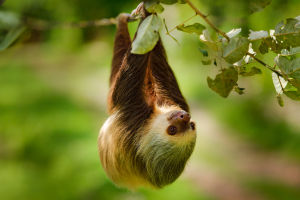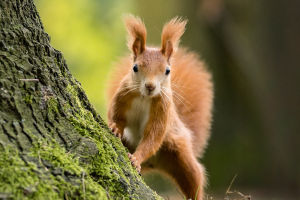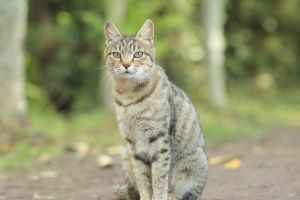Hello, Lykkers! Have you ever watched a little bee buzzing around, hopping from flower to flower, collecting nectar? Have you ever wondered—how does a bee find just the right flower? More importantly, how do bees see the world? Their tiny eyes hold a big secret!
Today, let’s dive into the fascinating world of bee vision together!
How bees turn nectar into honey
Video by Flow Hive
Bees See Colors Differently!
Just like us, bees can distinguish between different colors. However, their perception of colors is quite different from ours due to the way their eyes process light. While we see red, green, and blue as primary colors, bees are more sensitive to yellow, blue, and ultraviolet light.
Surprisingly, red appears as black to bees! This is because red light has a longer wavelength that doesn’t strongly stimulate their eyes. On the other hand, colors like blue, purple, and yellow stand out vividly to them.
So, that bright red flower you admire? A bee might not even notice it! Instead, they are drawn to shades that mix yellow and blue—colors that appear as blue, green, or even purple in their eyes.
How Do White Flowers Look to Bees?
To us, white is simply white. But to a bee, it’s a whole new color! Since bees process colors differently, what appears as white to our eyes might be blue or purple in their vision. This unique way of seeing helps them identify flowers that are rich in nectar.
Interestingly, yellow flowers are some of their favorites because their complex pigmentation translates into multiple hues in bee vision, making them easy to spot.
So, next time you step into a garden full of blooming flowers, imagine how a bee might see it—a world painted in vibrant blues, purples, and yellows!
Bees Live in a Mosaic World
Bees don’t see images the way we do. Instead of one clear picture, their eyes break everything into tiny pieces—like a mosaic!
A bee’s vision works through its compound eyes, which are made up of thousands of tiny lenses called ommatidia. Each lens captures a small portion of the world, and together, they create a pixelated image, much like an old-school video game.
This means that instead of smooth shapes and details, a bee sees a flower as a patchwork of colors and patterns. And when they’re flying quickly, their vision becomes even more simplified, almost like black-and-white pixels until they slow down.
So, if a bee zooms past a garden at high speed, it won’t see bright, colorful flowers—it will just see a flickering, shifting mosaic!
Finding Flowers with Scent, Not Sight
With such a fragmented vision, how do bees find flowers so precisely? The answer is simple—they follow the scent!
A bee’s sense of smell is incredibly powerful, thanks to thousands of odor-sensitive cells. Flowers, in turn, have evolved to release special scents that attract bees from miles away. The stronger the fragrance, the easier it is for a bee to locate its source.
For example, flowers like acacia and linden trees have light-colored petals but a strong fragrance. Bees can detect these flowers from long distances and navigate directly toward them.
Bees Can See Invisible Patterns
Another superpower that bees have is their ability to see ultraviolet light—something invisible to human eyes!
Many flowers have hidden ultraviolet patterns that act like glowing road signs, guiding bees straight to their nectar. These UV markings create a kind of "landing path," making it easier for bees to locate the center of a flower.
Additionally, some flowers with thin stems sway gently in the wind, using movement to attract the bees' attention. These subtle signals help bees make quick decisions about where to land and collect nectar.
Bees Focus on What Matters Most
With a tiny brain containing less than a million neurons, bees don’t waste energy processing unnecessary details. Instead, they focus on what’s essential: finding food, avoiding obstacles, and navigating back home.
Bees use the sun as their main navigation tool. Even when the sun is hidden, they can rely on polarized light—a unique property of sunlight that helps them determine direction. They also memorize landmarks, such as trees or large rocks, to guide their way.
This is why beekeepers often paint beehives in different colors—to help the bees recognize their home among many identical boxes!
Bees See in Slow Motion!
Here’s a fun fact: bees experience the world in slow motion!
While humans perceive fast-moving objects as a blur, bees process movement much faster. If you wave your hand in front of a bee, it sees it as a series of slow-motion frames, allowing it to react instantly.
This is why trying to swat at a bee often backfires—it sees the movement clearly and reacts faster than you can! Interestingly, shouting or making sudden mouth movements can also trigger their defense reflex, which is why people often get stung around the lips or face.
So next time a bee comes near, stay calm, move slowly, and let it do its job—it’s just looking for flowers, not trouble!
Final Thoughts
Lykkers, isn’t the world of bees fascinating? They see a world filled with ultraviolet patterns, shifting mosaics, and scent trails leading them to the best nectar sources. Their vision may be different from ours, but it’s perfectly designed for their tiny, hardworking lives.
Next time you see a bee buzzing around, take a moment to appreciate its unique perspective. And maybe, just maybe, it’s looking at you in a way we could never imagine!
Would you like to learn more about bees and their amazing abilities? Let us know in the comments!


